What Is Brutalist Architecture | Brutalist Design | Brutalism Architects Buildings & Houses | What Is Neo-Brutalism
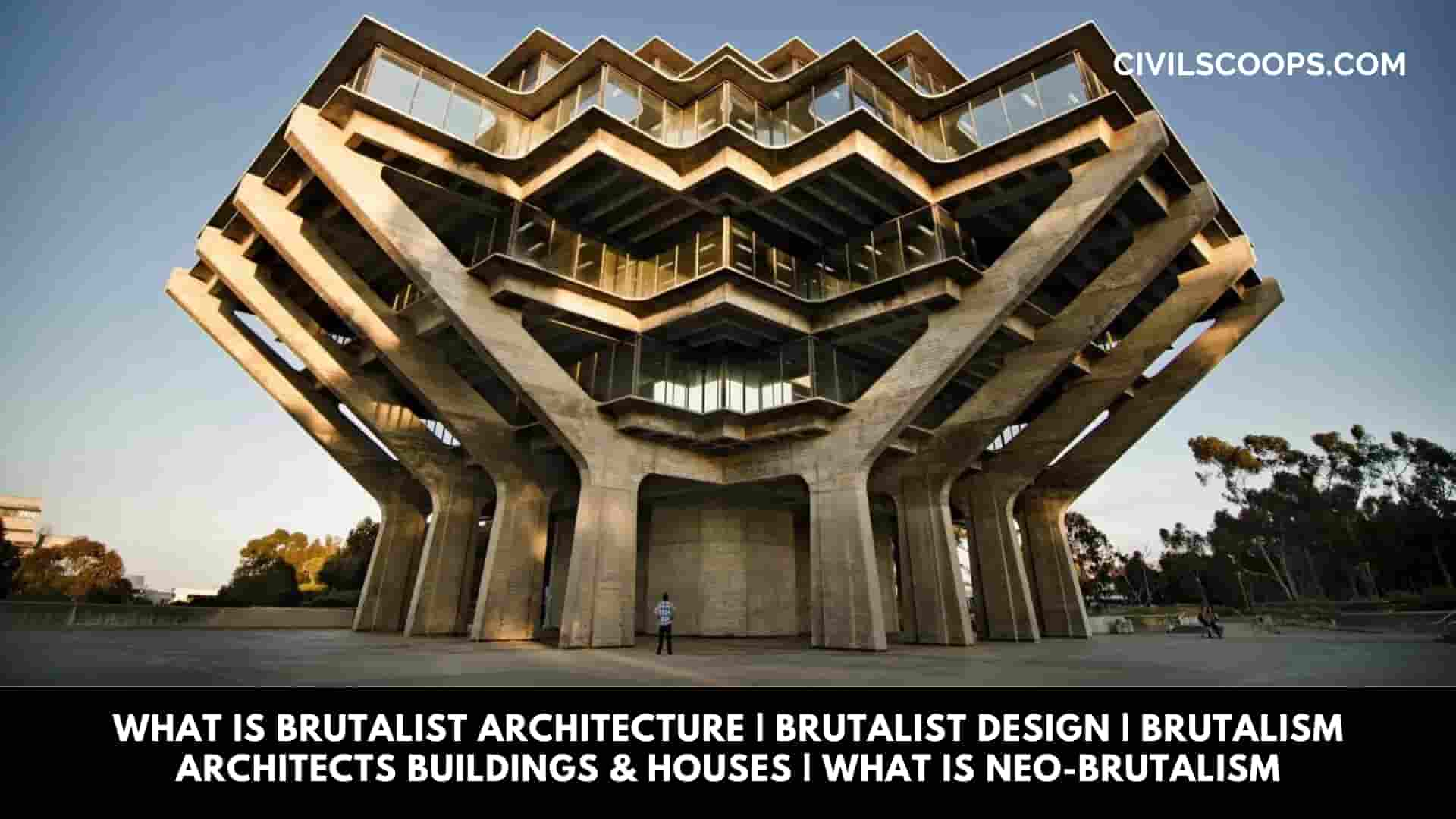
Table of Contents
History of Brutalist Architecture:
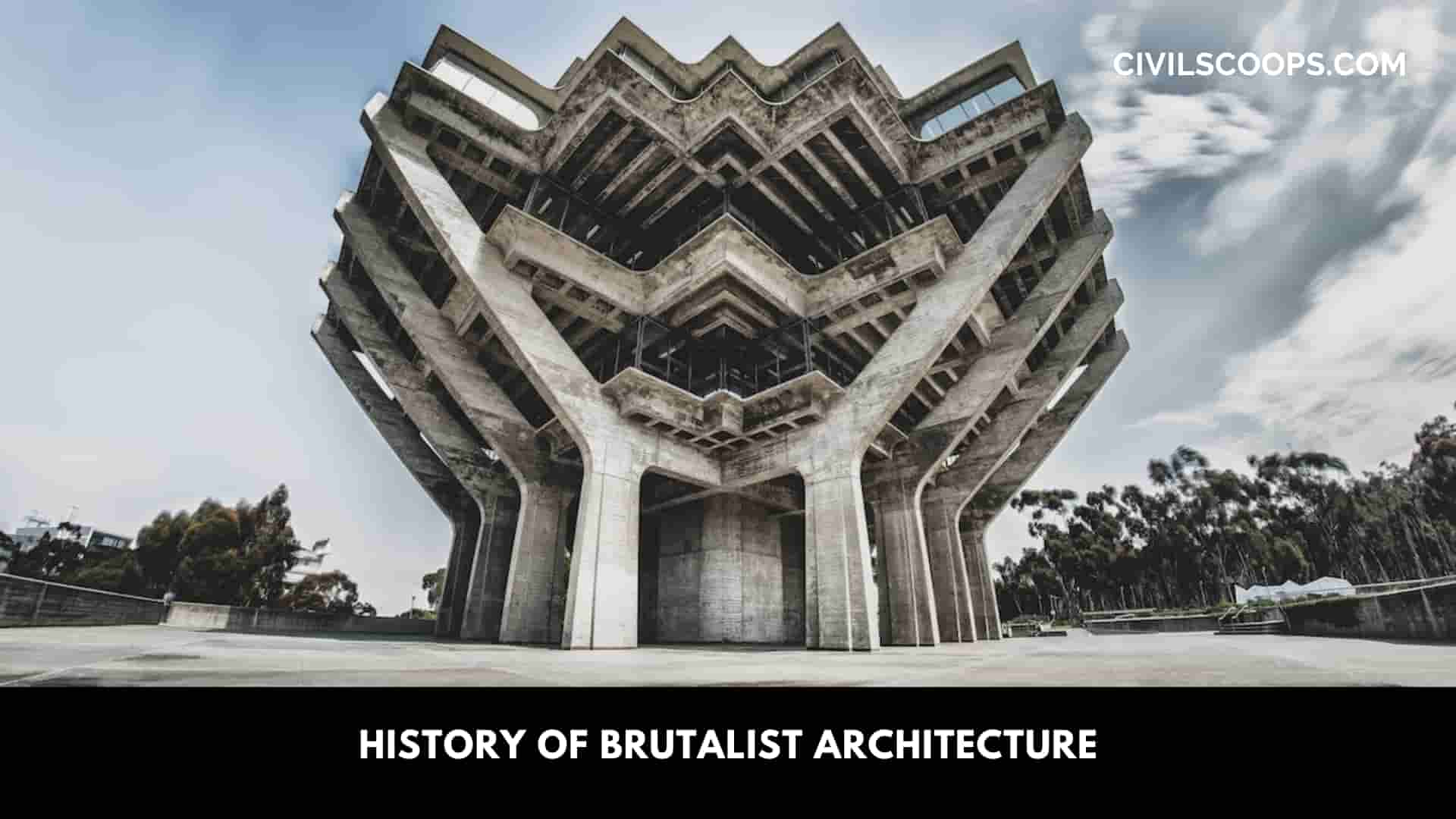
The history of brutalist architecture goes back three years the 1940s to the 1950s when it first emerges. In the year of 1940, on the verge of the second world war, nazi germany attacked Britain with their massive air fleet. In response to that, Britain resisted the attack with its royal air force & royal navy.
The battle is recorded in history as the Battle of Britain. As a result of this great war, a massive amount of buildings was turned into debris & ashes. As the war ended; the reconstruction work begins.
At that time, there was a massive amount of shortage of funds due to a considerable amount of money getting drained in war. Thus this type of Architecture came into existence, which only showcases bare construction materials, instead of different finishes over it.
What Is Brutalist Architecture?
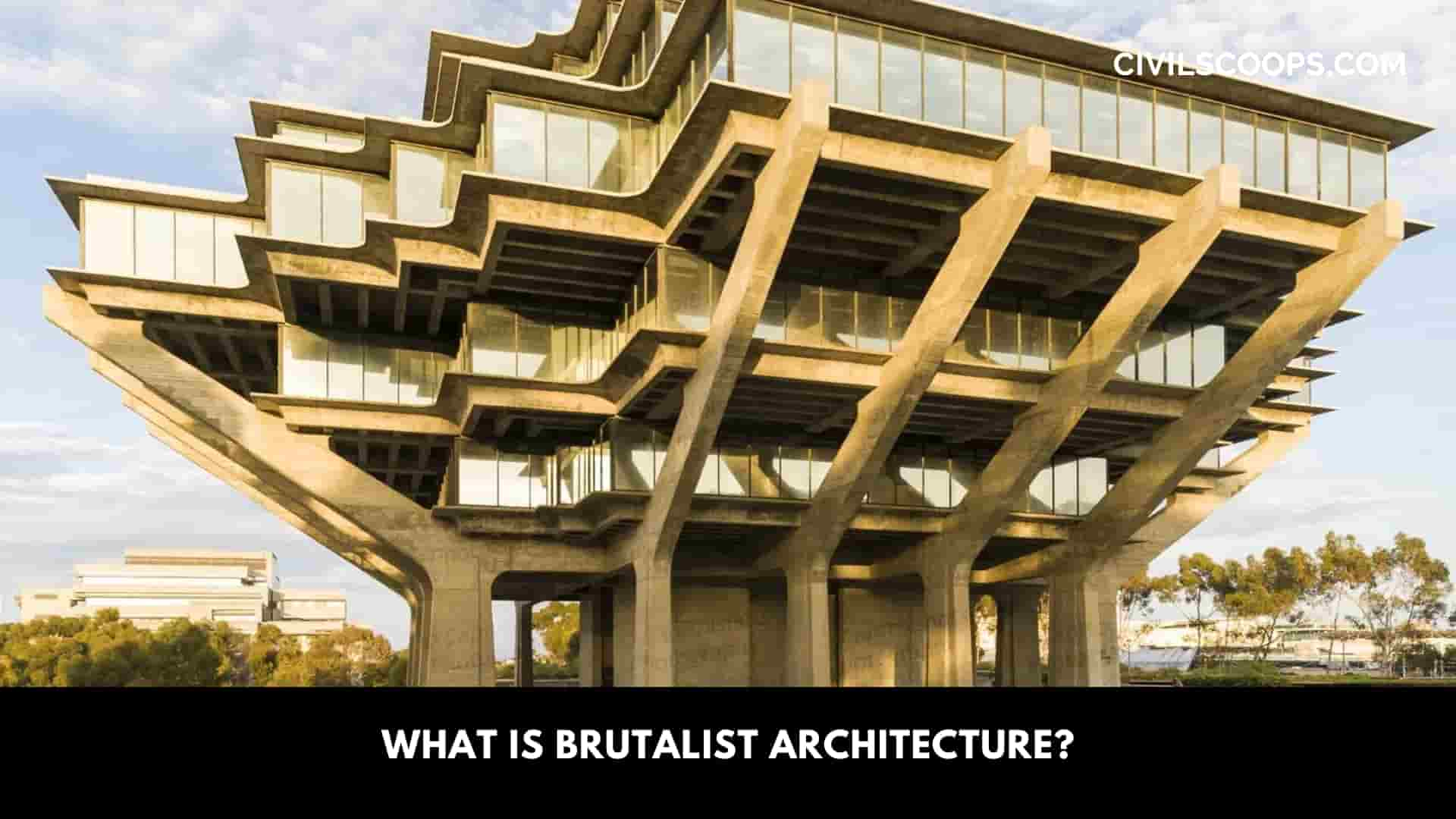
The birth of Architecture can be witnessed around from the Neolithic period of 10,000 BC; or in other words, from the time humans stop living in caves & started building their own houses with possible resources.
From the time the humans got themselves protected from the hostile surroundings, I.e from the danger of wild animals; natural calamities, and as such; they started to develop aesthetic senses; which also included a recording of their lifestyles through carvings in the stones.
From the ancient artifacts, we came to know that ancient architecture came along with the ancient civilization; and with time, the types, styles of presenting their lifestyle through Architecture were also modified.
After many decades, though passing different stages, our modern Architecture came. Brutalist Architecture is nothing but one of the stages our modern Architecture passed through.
Brutalist Architecture is the type of Architecture, where bare construction materials such as concrete, and bricks, are exposed and showcased over different decorative designs, compared to nowadays.
So in other words, Brutalist Architecture is where the basic construction materials are given importance Structurally as well as aesthetically; over showcasing different protective and visually appealing materials on them.
Understanding Brutalist Architecture
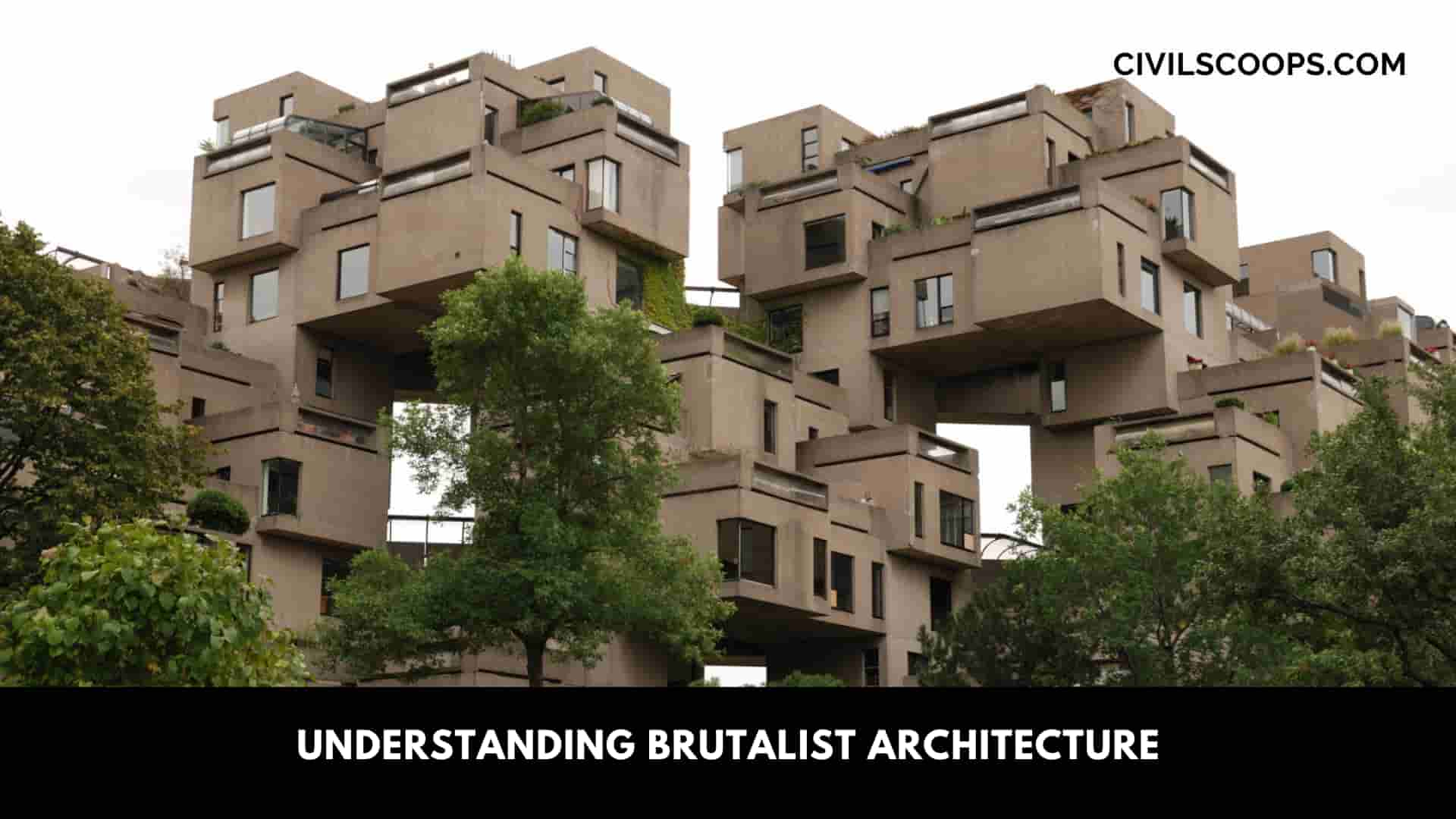
Although the primary reason for constructing Brutalist buildings is that to minimize the reconstruction cost from the post-war era, but as this type of Architecture came into existence; it attracted the minds of a lot of young architects; mostly from a philosophical point of view.
Many said that Brutalist Architecture is a medium of showcasing the bare beauty of structural materials, along with their hidden strength provided on each structure; while others expressed their thoughts, on Brutalist Architecture giving a sign of honesty and truthfulness; without adding any more “masks” over it.
Understanding Brutalist Architecture can be a very tough thing to crack, as one has to have thoughts on logic as well as in a philosophical sense.
There are many researcher papers as well as thesis, are available worldwide while only showcasing Brutalist Architecture and the reasons behind them.
Although Brutalist Architecture first came into existence in the United Kingdom but later progressed into different corners of the world.
Nowadays brutalist Architecture can be witnessed in different corners of the world, holding a considerable significance of the post-war era.
Brutalist Design
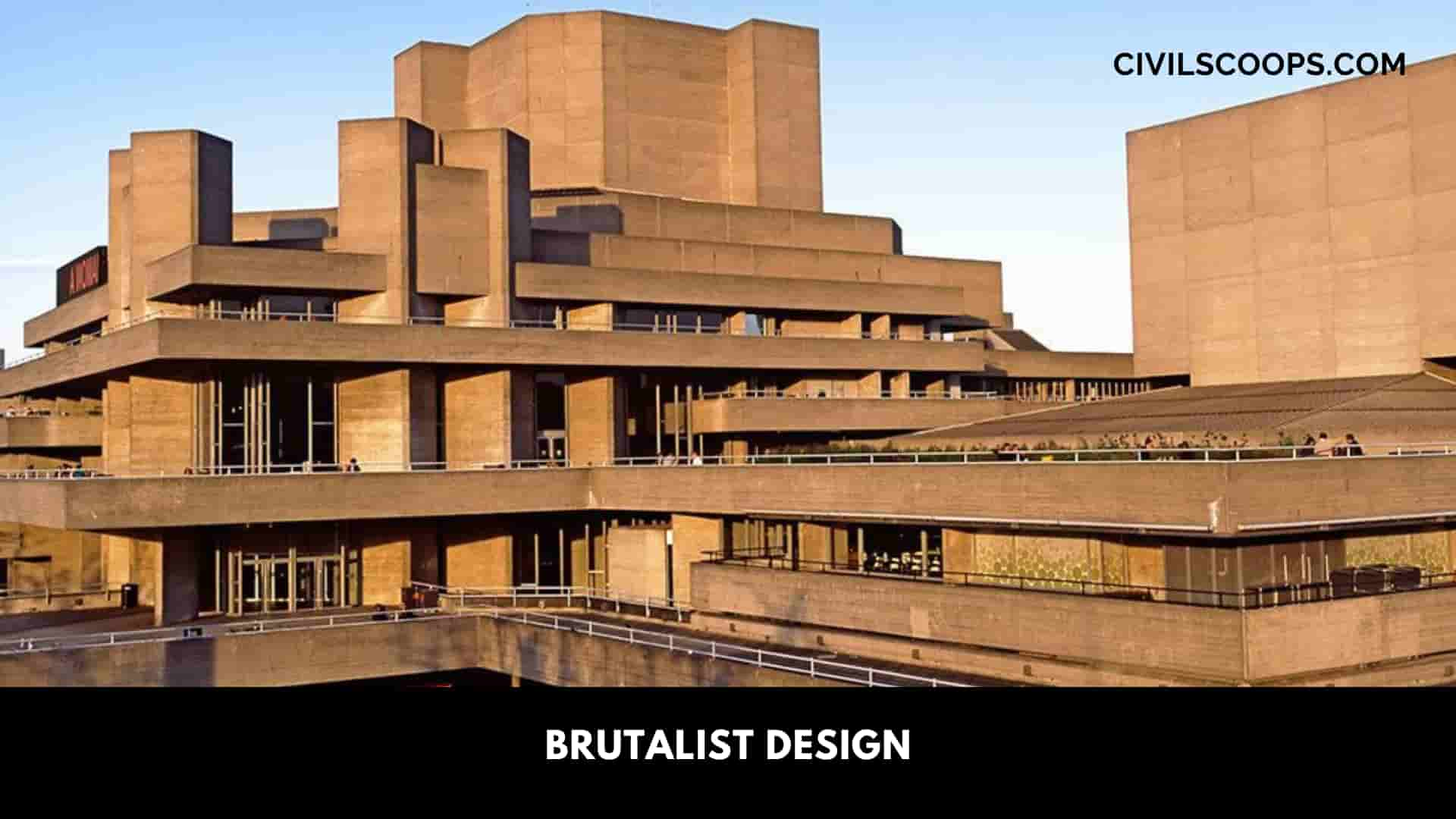
To understand the brutalist design, first we need to uncover the word “brutalism” & the hidden meaning behind it. Brutalism was originated from a French word, named, “crude cattle”, which when translated, can be meant “made of concrete“.
In the post-war era of World War two, the necessity of constructing low-cost buildings & government buildings emerged. Thus in that period, brutalism and brutalist design as well as architecture developed.
Brutalist design can be said, showcasing a building appearance with its structural material(can be of concrete, wood, grass, etc), which is as well characterized by plainness, transparency, and a symbol of simplicity.
After emerging in the early-mid 20th century, and becoming popular within the 1950s to 1960s; Brutalist design became a live example of concentration of young architects; as there are many mysteries yet to uncover about Brutalist Architecture as well as Brutalist design.
Many pioneer buildings in today’s world, some of which are very much considered as a cultural heritage, are an example of Brutalist design. Modern architects and designers are still trying to uncover their hidden mysteries of unyielding as well as some of the gravity-defying tendencies.
Brutalism Architects Buildings & Houses:
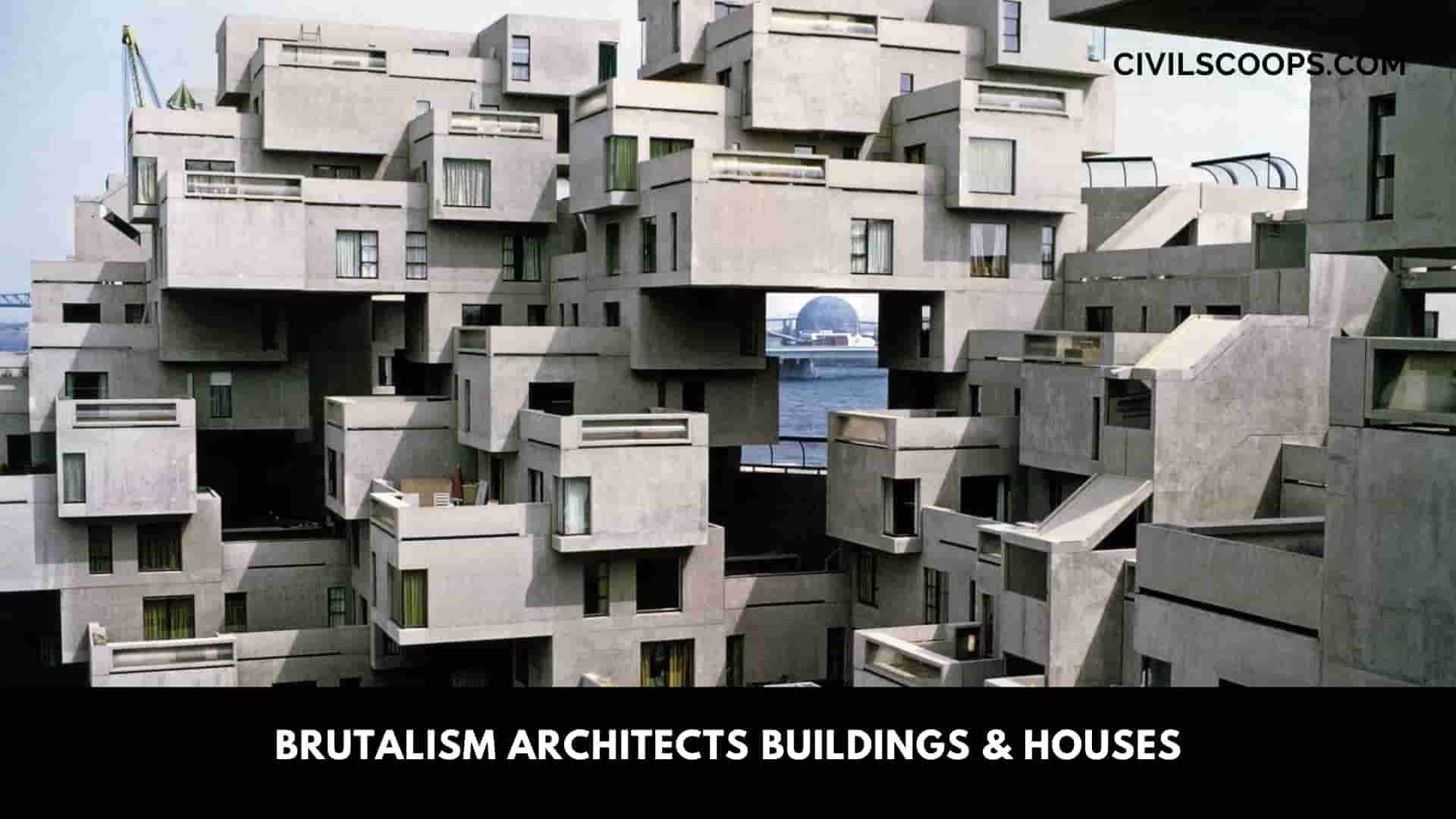
Although in the face of utterly criticism & oppression; many iconic examples of Brutalist Architecture and design got destroyed, but it can as well can be found, on different corners of the world.
Some of the famous Brutalist Architecture houses & buildings are mentioned in the following:
1. Radiant City, France:

Often denoted as “ Citè Radieuse “ in French, Radiant City is an iconic example of residential Brutalist Architecture houses. Being located in Marseille in France; it is conceived as well as a vertical garden City, which consists of self compacted & self-contained multiple units in a communal area.
This type of design and Architecture is a response of the designers and architects to the urgent need for accommodation, especially in the post-war era.
Being constructed in 1952, it consists of 18 stories, which easily accommodate more than 500 people at the same time. Due to its simple design & Architectural response, it is nominated in UNESCO World Heritage List.
2. Boston City Hall:

Getting Constructed in 1969, Boston City Hall construction was a part of a drive to restore the US former glory to its previous position. The construction of the building started in 1963 and took 5 years to complete.
The architectural style used here is brutalist; being a reason for oppression from various places; which also resulted in calls for demolishing The building, even before the construction has completed.
Although many modern and experienced architects expressed interest in Boston City Hall from various corners of the world; some also giving it a seat of “one of America’s proudest architectural design”.
The basic construction materials used for constructing this building is Concrete, exposed bricks, and quarry tile, at some places. It is generally constructed into three parts, the lowermost part Having the wide access of peoples.
3. Buffalo City Court Building:
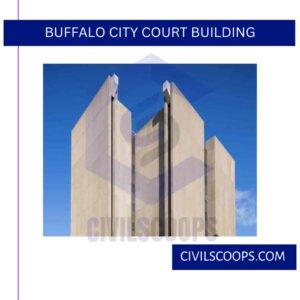
Constructed in the city of Buffalo in New York, the Buffalo City Court building is an iconic example of Modern Brutalist Architecture. Build-in 1974, It consists of Large Narrow windows, covered with massive Precast concrete panels.
The reason for this type of design is to keep the judges as well as audiences free from outside noises, and distractions. Constructed by Pfohl Architectural and design agency, it consists of 10 floors.
This type of Concrete facade is very uncommon, yet expresses a simple architectural style and the design is completely valid from the point of view of courts, where peaceful surroundings and obstruction-less proceedings are of prime importance.
4. Barbican:

Constructed in London, The Barbican is perhaps the most popular and well-known heritage in the United Kingdom. Destroyed by an air bombing in 1940, it turned into ashes.
In the post-war era of World War two, in the wake up of the need for different housing and habitual colonies, architectural firm chamberlin proposed to rebuild and redesign the structure, whose inspiration was partly the Radiant City of France.
Getting bombed in 1940 over this 35 acres massive land, the Architectural firm build it from ashes into a breathtaking high rise building, which can accommodate around 2000 apartments. The architectural firm also introduced horizontal lakes and parks; Bridges to differentiate the movement between pedestrians and cars.
Build-in 1970, and opened in 1982, it costs around 167 million euros. Today many of the theatres as well as schools are introduced with their horizontal stripes of lands, thus making it modern as well as an example 9f cultural heritage.
5. Trellick Tower:

Situated in London as well, Trellick tower remains a crucial example of Brutalist Architecture and design. This 98 metres tall, consisting of 31 floors, were finished building in 1972.
As soon as it became finished building, various words fell around the city of being an example of rude, crudités, vandalism, and a magnet of crime, drugs and prostitution.
After the 1980s, the popularity of this building got improved after getting socialized with various people’s. Slowing getting increasing reputation, the Trellick Tower of London now holds a Grade-II building designation of World’s heritage list. The building, as already mentioned, consists of 31 floors, connected by internal stairs.
There is a vertical strip of separate building particularly reserved for plantation and gardening, which is connected with the main building employing a passage of horizontal concrete blocks. In the modern era, this building still holds a higher value of being an example of Modern Brutalist Architecture.
There are many other examples of Brutalist Architecture such as:
- Habitat 67, Montreal
- The Breuer Building, New York City
- Western city Gate, Belgrade
- SESC Pompèa, Sào Paolo, etc.
What Is Neo-Brutalism?
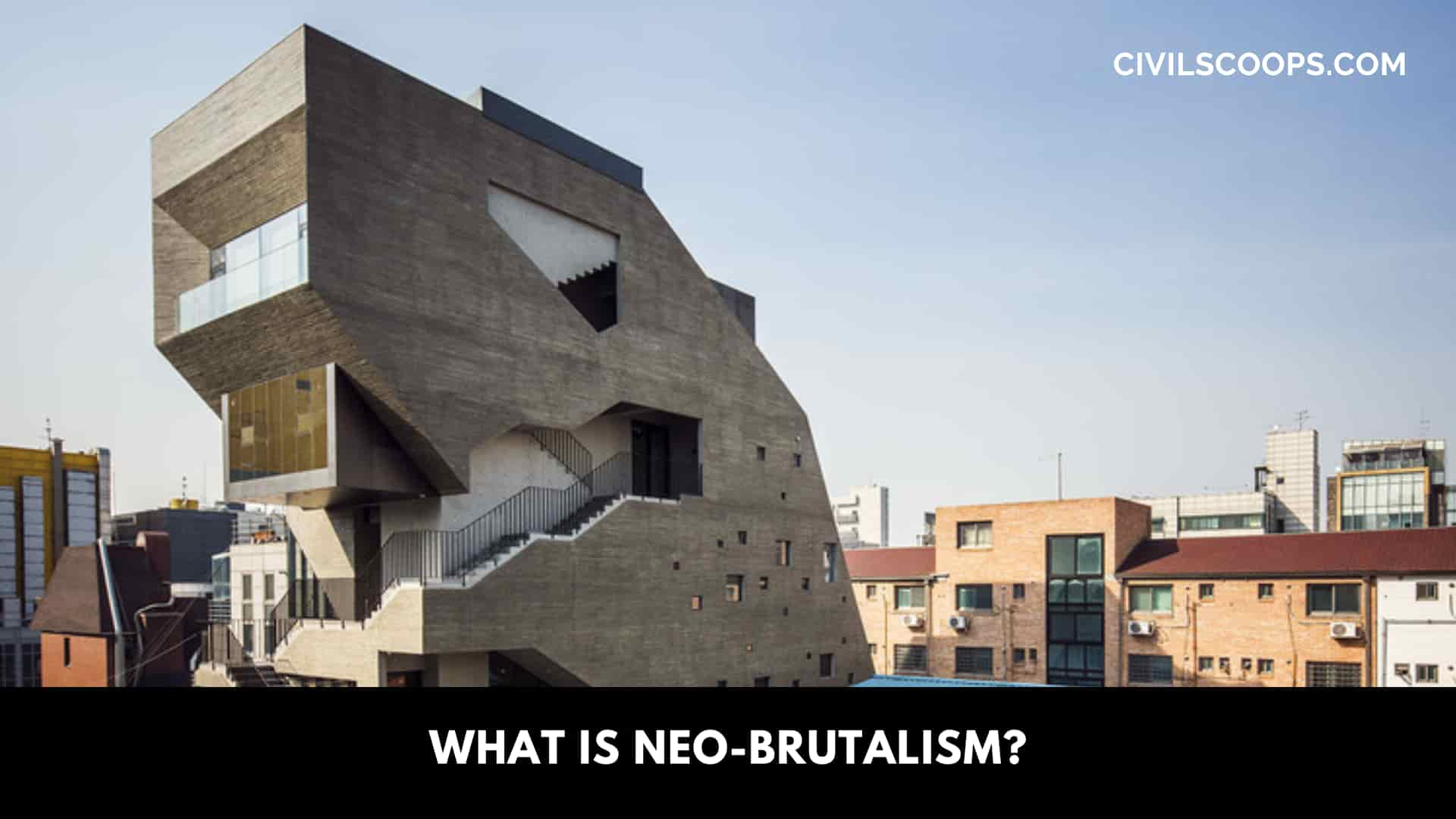
As brutalism evolved in the post-war era of World War two, approximately in mid 20th century, around 1940-1950, it soon becomes unfamiliar, and a sign of hatred as modernization as well as modern Architectural design came into existence, which excludes the exposure of bare construction materials, especially concrete, and comes with a protective as well as aesthetic covering such as paint, over it.
There are many reasons different researchers found which caused the unpopularity of Brutalism and brutalist style Architecture, some of them are mentioned below:
- Some researcher say that, in brutalist style Architecture, where concrete is the basic construction, are often disregarded, as Concrete does not age well. In addition to that, due to various changes of exposure conditions, concrete reacts massive, thus resulting in black spots, growth of fungal insects over them. Thus the changes that occur from the age of construction to the current age, is very massive. This is why protective and appealing coats are applied over the bare concrete blocks, which can protect the building finishes from external effects, also, can be maintained after a certain duration.
- Brutalist Architecture can be very rigid, and it requires external destructive forces, to incur even a slight change within it. Thus it preserves the way the architects design it at the time of construction. Many modern architects, as well as people, has showed it very unappealing, as brutalist Architecture tends to reflect architects choice and feelings, which might be positively or negatively, unlike modern Architecture, which can be changed and renewed anytime with application of little external forces.
- The third reason is the most crucial reason of unpopularity of brutalist Architecture, which can be perhaps said as a philosophical reason. As brutalist Architecture evolved, many architects, following the modern Architecture style, expressed their oppression against it. As brutalist Architecture includes exposure of construction materials, and due to the various unappealing defects of concrete under different weather conditions, many a time it developed black spots and stripes, rusts, strains due to waterlogging, thus indicating a very “cold” appearance. Many modern architects, magazine writers gave brutalist Architecture different unappealing names, such as “cold-hearted”, “hideous”, “monstrous”, “a symbol of evil and crudity”, “demonic presence in Brutalist Architecture”; and many more. But the main reason can be said as “the concrete does not age well, which instead, decays and crumbles”.
For this reason, many of the iconic brutalist Architecture Buildings faced a massive crowd supporting their demolition, for some buildings, even before it was even constructed. Many reporters of different media, even organised a poll, where major support was in line with the demolition.
Facing such a great criticism, many brutalist Architecture Buildings lost it’s dignity and turned into ashes, while others, barely keep up their existence.
In the year 2015, Brutalist Architecture again came into the spotlight, as many modern architects, and construction experts described their effectiveness in crucial situations, such as land shortage, which of course is the prime obstruction in today’s construction industry.
Perhaps it might be a little old school, but they explained how it accommodated more than 2000 apartments in a single building while making it a Structurally sound as well as artistically beautiful, gravity-defying structure.
As a result of the movement to revive brutalist Architecture, the world heritage committee nominated the names of different brutalist Architecture buildings in different grades, as a way to preserve the cultural heritage of brutalist Architecture. This movement is also called Neo-brutalism as the word “Neo” means “new” in French.
Also Read: Classification of Stone Work | What Is Stone Masonry
Neo-Brutalist Architecture:

As already mentioned in the previous para, Neo-brutalism is modern brutalism, or the revival of brutalism in structures, a more proper way to say it.
Neo-brutalist Architecture is none other than brutalist Architecture revived, In a modern way. Nowadays in various corners of the world, especially in the United Kingdom and France, many iconic Neo-brutalist Architecture can be found, getting revived into its former glory.
[su_box title=”FAQ” style=”default” box_color=”#333333″ title_color=”#FFFFFF” radius=”3″ class=”” id=””]
Brutalist Architecture
Brutalist architecture is a style of architecture that emerged in the mid-20th century and gained popularity in the 1960s and 1970s. It is characterized by its raw, exposed concrete surfaces, geometric forms, and a focus on functionality. The name “brutalism” comes from the French word “béton brut,” meaning “raw concrete.”
Brutalist Design
Brutalism in digital design is a style that intentionally attempts to look raw, haphazard, or unadorned. It echoes early 1990s-style websites (think Craigslist and the Drudge Report).
Why Is Brutalism Hated?
A big problem is that brutalist architecture makes frequent use of large, square concrete blocks, which often end up looking drab and foreboding at the same time.
What Is Brutalist Interior Design?
Raw materials, textured surfaces, simple silhouettes and geometric shapes are the hallmarks of Brutalist interior design. The trend comes from the post-Mid-Century era which celebrated grandeur, glam, geometric forms and repetitive patterns.
What Is Brutalism in Art?
Brutalism is a utilitarian aesthetic movement that shuns decoration in favor of exposing and celebrating the raw materials used to construct the design. It largely had its heyday in the architecture of the 1950s to 1970s, but it has recently seen a resurgence in modern digital design.
What Is Brutalist Architecture?
Brutalist architecture is an architectural style that emerged during the 1950s in the United Kingdom, among the reconstruction projects of the post-war era. Brutalist buildings are characterised by minimalist constructions that showcase the bare building materials and structural elements over decorative design.
What Is Brutalism?
a style of architecture or art characterized by a deliberate plainness, crudity, or violence of imagery. The term was first applied to functionalist buildings of the 1950s and 1960s that made much use of steel and concrete in starkly massive blocks.
What Is Brutalist Design?
Brutalist design refers to the application of the principles and aesthetics of Brutalist architecture in disciplines beyond architecture, such as interior design, furniture design, and graphic design. It carries forward the raw, utilitarian, and expressive qualities of Brutalism, often characterized by the use of robust materials, simple forms, and a focus on functionality.
Famous Brutalist Architecture
- Habitat 67, Montreal, Canada
- Boston City Hall, Boston, United States
- Centre Pompidou, Paris, France
- Trellick Tower, London, United Kingdom
- Robin Hood Gardens, London, United Kingdom
Brutalist Architecture History
Brutalist architecture emerged as a prominent architectural style in the mid-20th century, particularly in the 1950s and 1960s. The term “Brutalism” was coined by the British architectural critic Reyner Banham, derived from the French term “béton brut,” meaning “raw concrete.” Here’s a brief overview of the history of Brutalist architecture:
Brutalist Architecture Characteristics
Brutalism
- Rough surfaces. Use of varied or contrasting textures and materials. View the Rough Surfaces gallery.
- Massive forms. Creating a sense of mass, weight, and scale.
- Unusual shapes. Parts of the building can be differentiated for dramatic effect.
- Expression of structure. Creating a memorable and powerful image.
Brutalist Architecture Examples
- Geisel Library, San Diego, United States
- The Barbican Centre, London, United Kingdom
- Unité d’Habitation, Marseille, France
- Trellick Tower, London, United Kingdom
Neo Brutalism Architecture
New Brutalism, one aspect of the International Style of architecture that was created by Le Corbusier and his leading fellow architects Ludwig Mies van der Rohe and Frank Lloyd Wright and that demanded a functional approach toward architectural design.
Neo Brutalism
Neo-Brutalism is a design concept with an unusual background color theme without gradients, modern typography, animation, and ugly elements. Neo-Brutalism refuses the usual components of UXUI design and embraces uncomfortable design elements, and it is more fearless to use distinctive color palettes.
[/su_box]
[su_note note_color=”#F2F2F2 ” text_color=”#333333″ radius=”3″ class=”” id=””]
Like this post? Share it with your friends!
Suggested Read –
- What Is Paint Finishes for Walls | Types of Paint Finishes | Types of Paint Finishing
- 10 Principles of Architecture | What Is Architecture | Why Need Design Principles in Architecture
- Difference Between Marble and Granite | What Is Marble and How Is It Made | What Is Granite and How Is It Made
- What Is Bond Breaker | Purpose of Providing Bond Breaker | What Is Concrete Bond Breaker | What is Bond Breaker Tape
- Concrete Batching | Concrete Batching Plant | Types of Batching of Concrete | Various Factors Affecting the Choice of Batching System
[/su_note]
Originally posted 2023-05-20 11:19:14.
